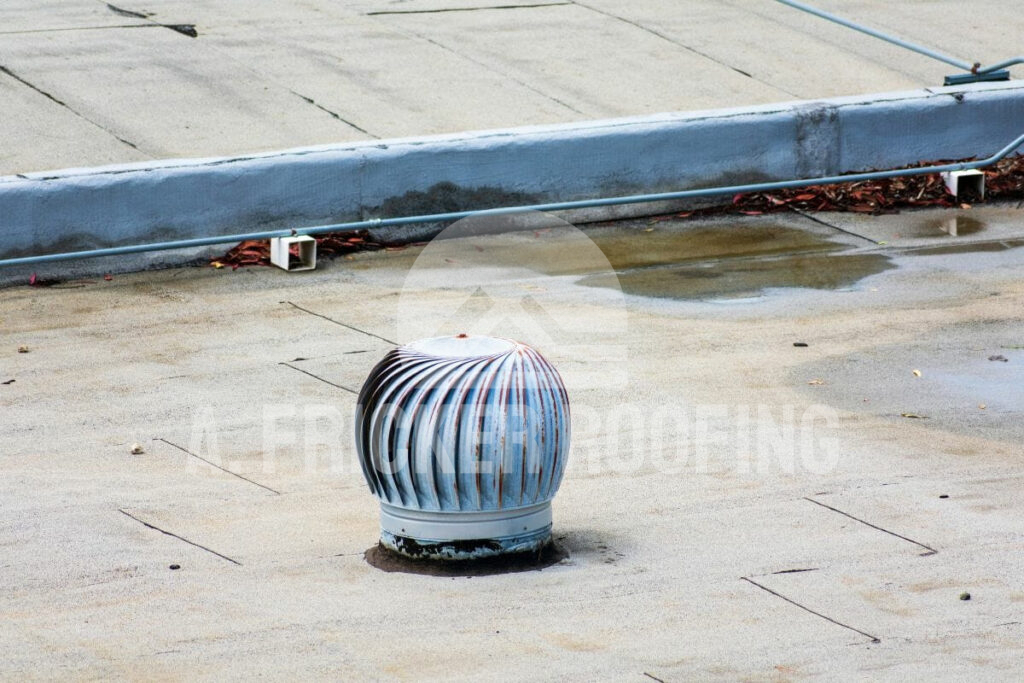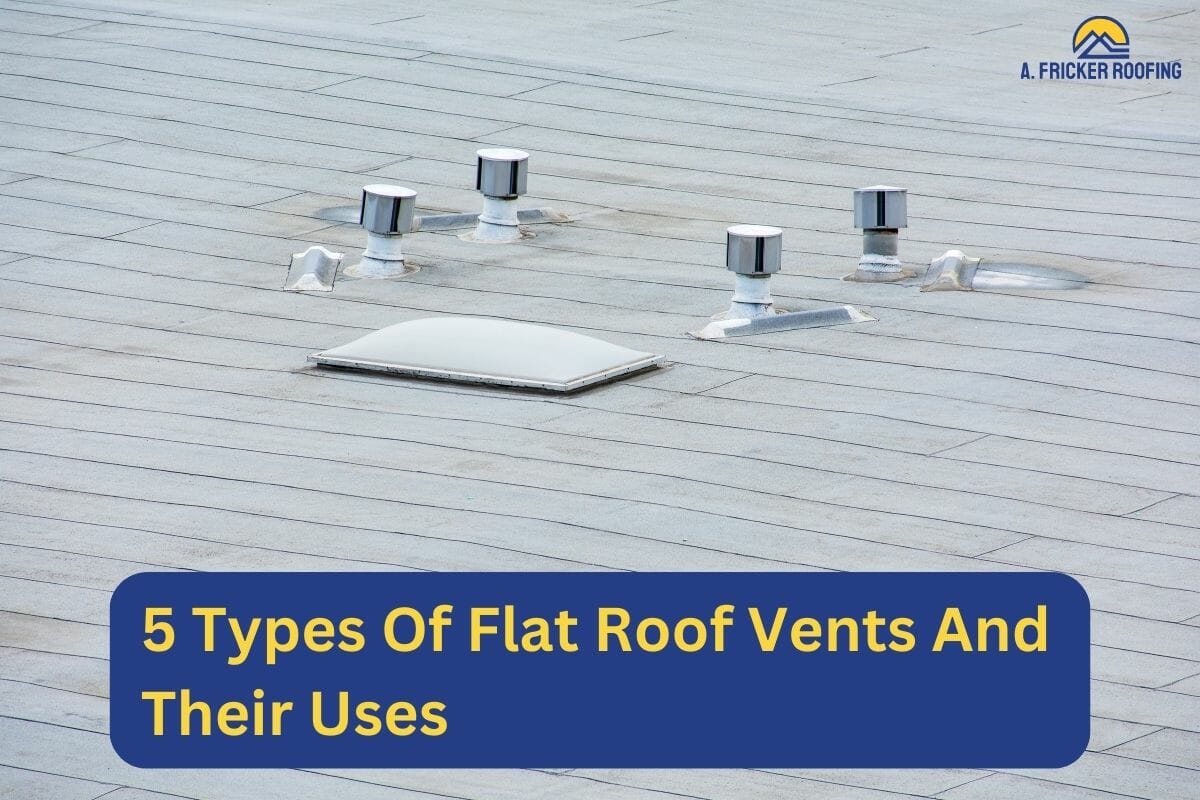When it comes to flat roofs, proper ventilation is essential to maintain a healthy and functional roofing system. Flat roof vents play a crucial role in regulating air circulation, preventing moisture buildup, and ensuring the longevity of the roof. In this article, we will explore five different types of flat roof vents and delve into their specific uses and advantages.
Why Is Ventilation Important For Flat Roofs?

Proper ventilation is crucial for flat roofs due to several reasons. Without adequate ventilation, a flat roof can experience temperature extremes, condensation buildup, and moisture-related damage. Here are the key reasons why ventilation is important for flat roofs:
Temperature Regulation
Ventilation helps regulate the temperature within the attic space of a flat roof. Without ventilation, hot air becomes trapped, leading to extreme temperatures that can damage roofing materials. By allowing hot air to escape and cool air to enter, ventilation helps maintain a stable and comfortable temperature in the attic space.
Condensation Prevention
Flat roofs are prone to condensation due to the lack of natural airflow. When warm air is trapped in the attic space, it can come into contact with the cold roof deck, leading to condensation. Over time, this can cause moisture damage and even mold growth. Proper ventilation allows for the escape of moist air, preventing condensation and its associated problems.
Energy Efficiency
Proper ventilation can also contribute to energy efficiency in your home. By reducing heat buildup in the attic space, ventilation helps lower the overall temperature, reducing the strain on cooling systems. This can lead to energy savings and improved comfort for occupants.
If you see any cracks and leaks in your flat roof, read our extensive blog post on flat roof leaks, cracks, and restoration.
5 Types of Flat Roof Vents and Their Advantages
Now that we understand the importance of ventilation for flat roofs, let’s explore the different types of flat roof vents and their specific advantages. Each type of vent serves a unique purpose and offers distinct benefits for flat roof ventilation.
1. Breather Vents
Breather vents are specifically designed to expel moisture from flat roofs. These vents feature a unique design that allows air to circulate while preventing moisture from entering. Breather vents use a bellows system that opens and closes based on the moisture content in the roof. They are highly effective in preventing condensation and promoting proper airflow.
Advantages of breather vents:
- Effectively expel moisture from flat roofs
- Prevent condensation and mold growth
- Allow for proper airflow and ventilation
2. Mushroom Vents
Mushroom vents, as the name suggests, have a shape resembling a mushroom. These vents are typically made of aluminum and are designed to stabilize the temperature within the roofing system. Mushroom vents allow for the escape of hot air and the release of moisture, helping to maintain a balanced and healthy roof environment.
Advantages of mushroom vents:
- Stabilize temperature within the roofing system
- Allow for the release of hot air and moisture
- Promote a balanced and healthy roof environment
3. Box Vents
Box vents are simple and effective. These vents have a box-like shape and work by allowing air to flow out of the roof. While they may not be as efficient as other ventilation options, box vents still provide adequate airflow and can be easily installed on flat roofs.
Advantages of box vents:
- Simple and cost-effective ventilation option
- Allow for airflow and ventilation
- Easy to install
4. Soffit Vents
Soffit vents are intake vents that are typically installed along the underside of the roof overhang. These vents allow natural air to enter the attic space and work in conjunction with roof-mounted vents to create a continuous flow of air. Soffit vents are an excellent addition to flat roof ventilation systems as they help push hot air out naturally and promote proper air circulation.
Advantages of soffit vents:
- Allow for fresh air intake into the attic space
- Work in tandem with roof-mounted vents for proper airflow
- Promote better air circulation and prevent moisture buildup
5. Pop Vents
Pop vents, also known as louvered pop vents, are mechanical vents that use electric fans to create airflow. These vents are commonly used on buildings with flat roofs to bring in fresh external air or remove heated air from the roof cavity. Pop vents are highly effective in improving ventilation and maintaining a comfortable roof environment.
Advantages of pop vents:
- Create airflow and ventilation with electric fans
- Bring in fresh external air or remove heated air
- Improve ventilation and maintain a comfortable roof environment
How Much Ventilation Does a Flat Roof Need?

Determining the amount of ventilation needed for a flat roof depends on various factors such as the size of the roof, climate conditions, and the specific requirements of your property. As a general rule of thumb, the recommended ventilation rate for flat roofs is around one square foot of ventilation for every 150 square feet of attic space. However, it’s essential to consult with a roofing professional to assess your specific needs and determine the optimal ventilation solution for your flat roof.
Conclusion
Proper ventilation is vital for flat roofs to maintain their longevity, prevent moisture-related issues, and create a comfortable living environment. By understanding the different types of flat roof vents and their advantages, you can make an informed decision on the best ventilation solution for your flat roof. Whether it’s breather vents, mushroom vents, box vents, soffit vents, or pop vents, each type offers unique benefits and contributes to a well-ventilated flat roof. Consult with a roofing professional to determine the optimal ventilation system for your specific needs and ensure the longevity and health of your flat roof.
Best Flat Roofing Services In Tulsa, OK
Have you noticed moisture on your flat roof that suggests you should add some flat roof vents? If so, you shouldn’t delay installing vents on your flat roof, as it may cost you more in the future.
Hire the best roofing company in Tulsa, OK, for your flat roofing project. Here at A. Fricker Roofing and Waterproofing, we are a team of skilled and professional roofers that you can rely on. Call us today at (918) 402-7167 and consult with a professional roofer for your flat roofing needs.

